8 Types of Ticks in Texas (With Pictures)
-
Pete Ortiz
- Last updated:
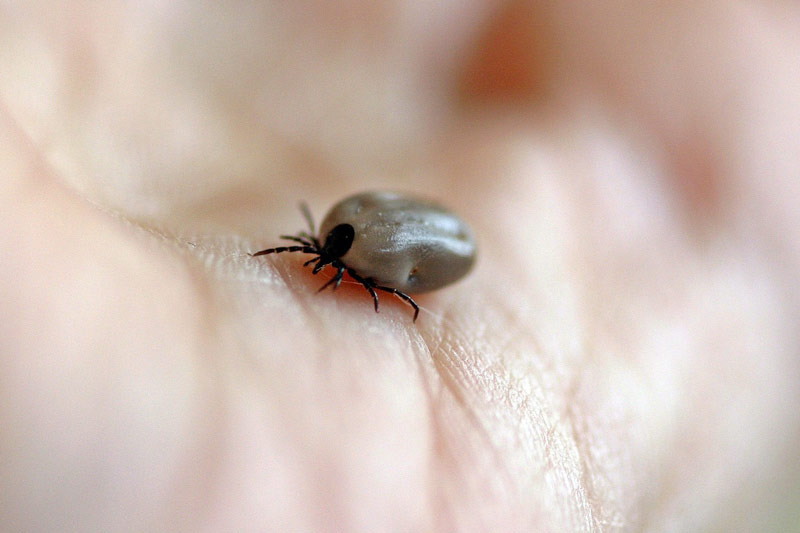
Let’s kick this off by debunking all the myths that are circulating out there. First off, not all ticks transmit Lyme disease. If that were the case, Texas wouldn’t be listed as a low-incidence state1. Secondly, detaching the tick’s head from its body doesn’t mean that it’s incapacitated. It only takes a bite to transfer pathogens to the human body, so stay away from that head.
Thirdly, Vaseline doesn’t instantaneously kill ticks. If you thought that that was the most effective method of detaching it from your skin, you’re wrong. You’ll only aggravate the parasite, forcing it to transmit more bacteria faster.
And lastly, ticks don’t leap from trees or fly. Even if they could, it would be virtually impossible, considering these blood-sucking arachnids don’t have eyes. If a tick wants to change hosts, it will patiently wait for it to come close, and then quietly latch onto the skin.
Now that that’s out of the way, let’s move on and talk about the common ticks in Texas.
The 8 Types of Ticks in Texas
1. Brown Dog Tick (Kennel Tick)
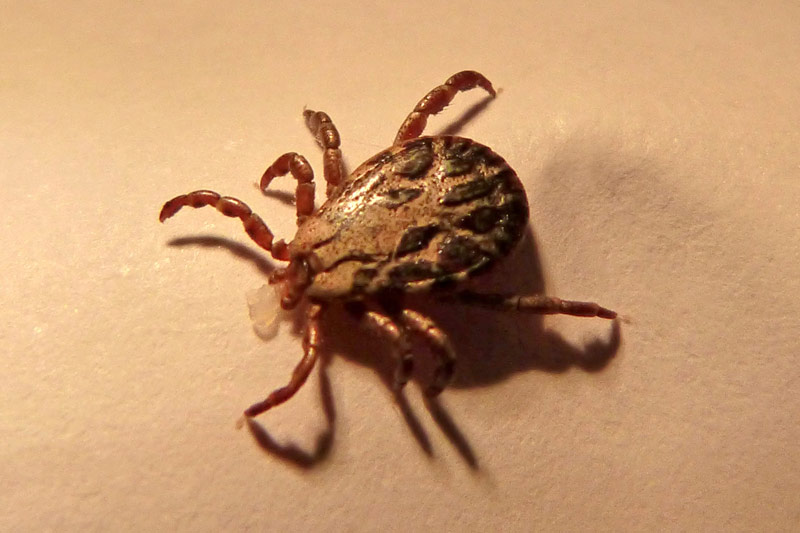
| Scientific Name: | Rhipicephalus sanguineus |
| Color: | Reddish-Brown |
| Host: | Three-Host Tick |
The brown dog tick is a one-of-a-kind species, in the sense that it’s one of the few ticks that can complete its life cycle anywhere. It doesn’t care if its host spends most of the time indoors or outdoors, as long as no external factor interferes with its development. So don’t be surprised when you find one in your dog kennel, or on clothes that haven’t been worn in ages.
By the way, they are also called Brown Dog Ticks because they are brown, and their preferred hosts are dogs. Also, brown dog ticks may transmit a disease known as babesiosis.
2. American Dog Tick
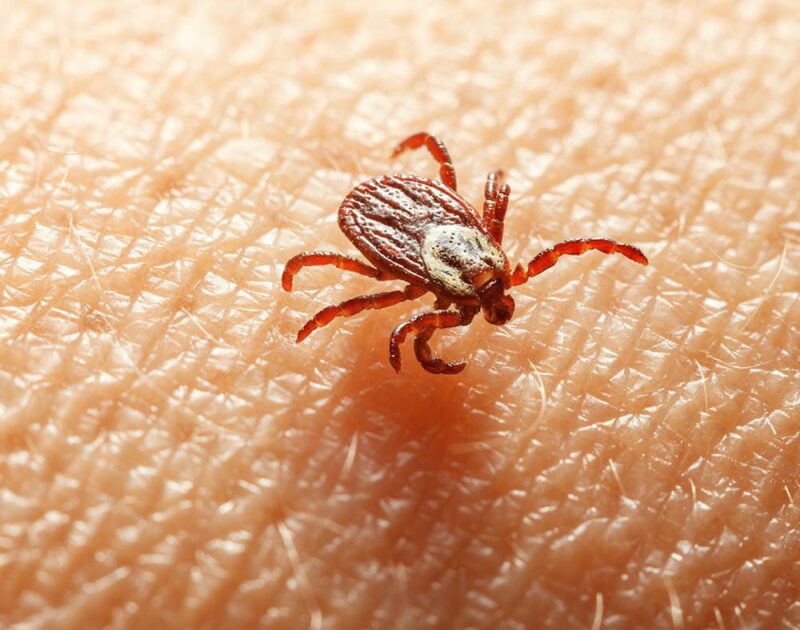
| Scientific Name: | Dermacentor variabilis |
| Color: | Brown to Reddish-Brown |
| Host: | Three-Host Tick |
The American dog tick species is predominantly found in North America. We don’t know why they hate forest covers so much, seeing as they are normally found along the edges, or in grassy fields. It’s okay to assume that they are your quintessential tick, as they also latch onto three different hosts during their lifecycle.
In other words, the larvae host won’t be the same as the nymph hosts or the adult host — three different life stages, three different hosts. If there’s no host available, they’ll go into hibernation for up to two years.
On top of that, the adults don’t discriminate when it comes to choosing hosts. They’ll crawl onto any cat, dog, raccoon, squirrel, rat, human, etc. But the larvae and nymphs mainly focus on relatively small mammals, such as chipmunks, voles, and mice.
This species is responsible for transmitting Rocky Mountain Spotted Fever.
3. Lone Star Tick
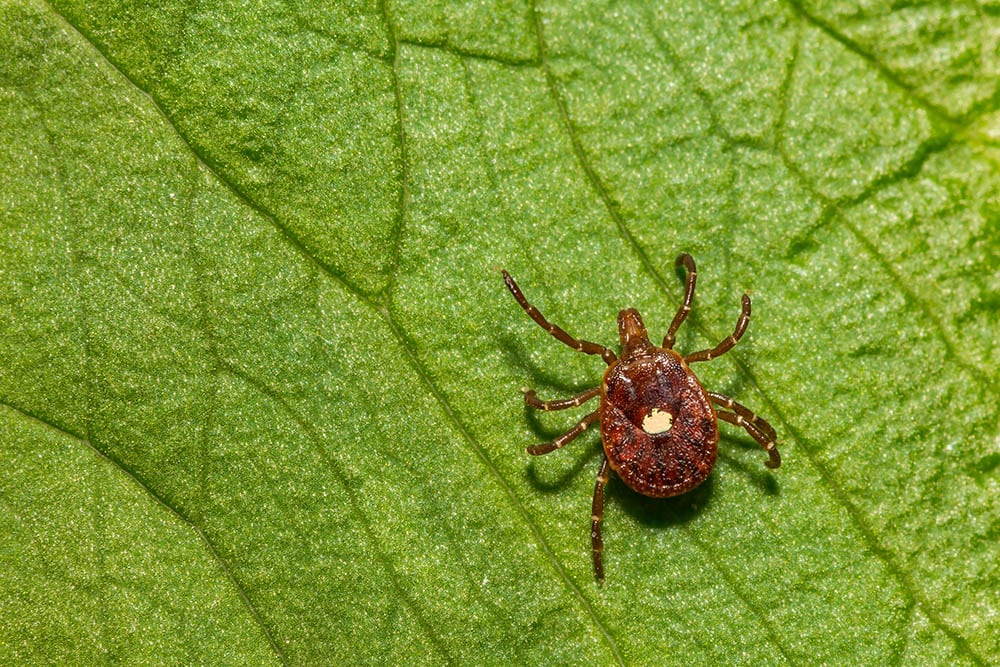
| Scientific Name: | Amblyomma americanum |
| Color: | Reddish-Brown to Tan |
| Host: | Three-Host Tick |
We’ve said this before, but we’ll say it again; the Lone Star tick has never been a vector for Lyme disease. You may develop a circular rash once you’re bitten, and yes, the rash will be similar to that of Lyme disease, but several studies have disassociated this condition from Borrelia burgdorferi — the parasite known to cause Lyme disease.
Our medical practitioners call that rash the Southern Tick-Associated Rash Illness — Commonly abbreviated as STARI. Other symptoms include muscle aches, chills, fever, mild headache, and fatigue. You can manage the symptoms using doxycycline, which is an oral antibiotic.
Is it true that the Lone Star tick can cause a red meat allergy1? Yes!
We wouldn’t want to bore you with the scientific nitty-gritties, so we’ll keep it simple. The bacterium transferred to the hosts doesn’t react well with Galactose-alpha-1,3-galactose. This is a carbohydrate that’s often present in mammalian meat, dairy products, protein powder, and Cetuximab (a cancer drug).
4. Deer Tick
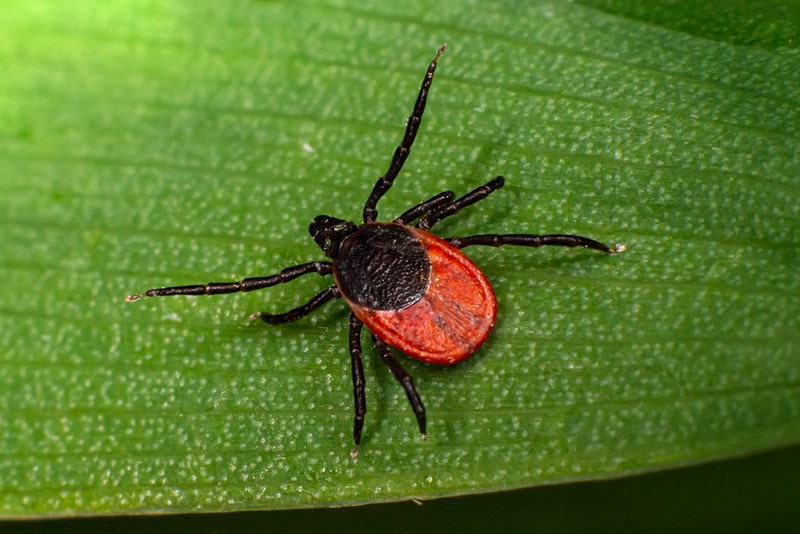
| Scientific Name: | Ixodes scapularis |
| Color: | Black, Dark Brown |
| Host: | Three-Host Tick |
The deer tick species name might not sound familiar to some of you guys because you’re used to calling it the blacklegged tick. And this tick is the vector for the infamous Lyme disease.
The funny thing about the deer tick is that it usually takes close to two years to get to adulthood. The eggs take a whole calendar year to hatch to larvae, and then another year from nymph to adulthood. If you don’t want to be a deer tick host, stay away from tall grasslands or deciduous forests.
These ticks primarily host on white-tailed deer. They love them so much that they are willing to spend their entire lives latched onto one host. But, they may also latch on to other animals, pets, and humans.
5. Winter Tick
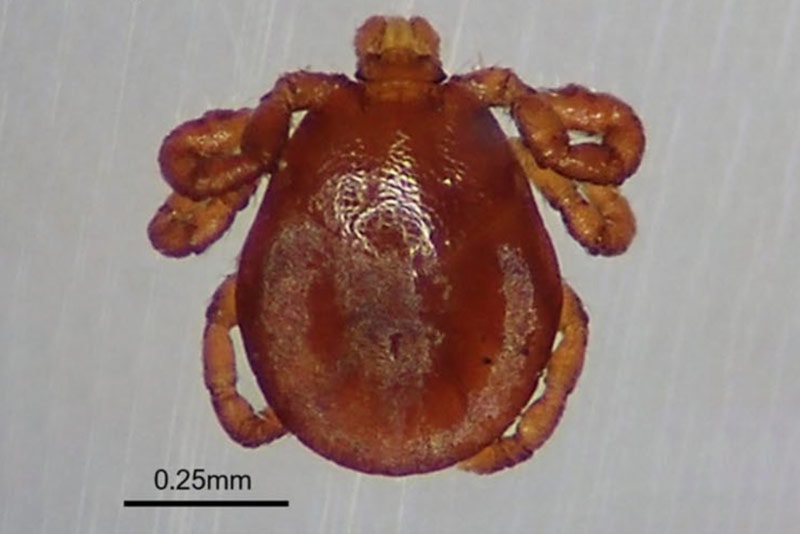
| Scientific Name: | Dermacentor albipictus |
| Color: | Reddish-Brown |
| Host: | One-Host Tick |
You’ll realize that some sources don’t actually use the name “winter tick”, but rather moose tick. If you haven’t guessed it already, it’s because their primary hosts are the moose, with the secondary hosts being cattle, horses, caribou, elk, or deer. The winter tick doesn’t like humans that much, so just relax. They won’t bite unless provoked.
But don’t let your pets play in forested areas, seeing as they like to use them as incidental hosts. This species is a one-host tick, with three active life cycles. What’s more, in a single year, they are capable of producing an entire generation. And the larvae will start hatching during the later stages of summer.
6. Cayenne Tick
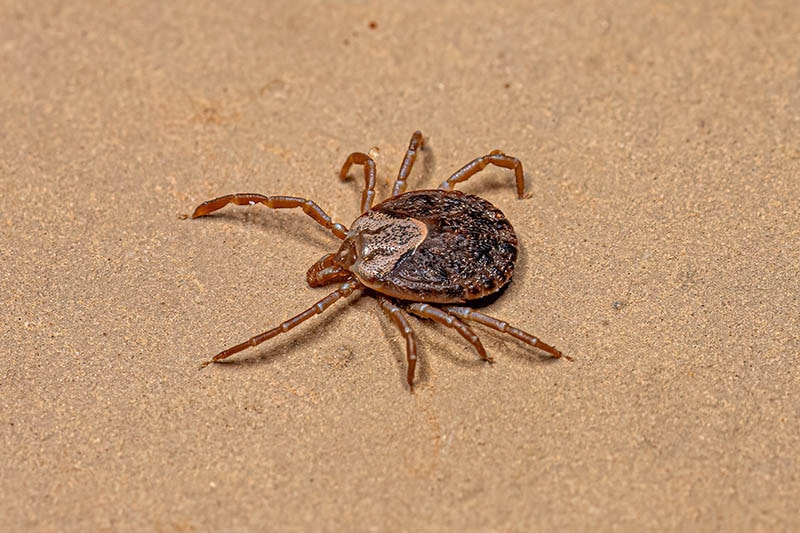
| Scientific Name: | Amblyomma cajennense |
| Color: | Mottled Brown |
| Host: | Three-Host tick |
We used to think that the cayenne species is only found in southern Texas, until recently when we started getting reports of sightings in states that border the Gulf of Mexico. Those residents have incessantly complained about how this tick is affecting their horses and is sort of becoming prevalent.
Could they have mistaken it for a different species? Maybe. But considering the fact that this species prefers horses as hosts and taking into account the type of habitats described (wooded areas), that identification is without a doubt accurate.
Lucky for them, the cayenne tick rarely uses humans as hosts. If that would have been the case, they could transmit Theileria equi or Rocky Mountain Spotted Fever right now.
7. Gulf Coast Tick

| Scientific Name: | Amblyomma maculatum |
| Color: | Dark Bluish-Gray |
| Host: | Three-Host Tick |
The Gulf Coast tick can survive without a host for a considerably long period, as long as they find a canopy cover to weather out the elements. It’s very active between June and September, as they’ll be found preying on anything, including humans and birds.
Gulf Coast ticks are social in nature. They’ll form a community, find a host, and then latch on its ear. They are the reason why young calves suffer from Gotch ear, a condition where their ear tissues are completely damaged due to the species’ cluster feeding habits. If the farmer doesn’t take care of the problem soon enough, that ear will droop, forcing the animal’s sale value to take a nosedive.
8. Groundhog Tick
| Scientific Name: | Ixodes cookei |
| Color: | Reddish Tan |
| Host: | Three-Host Tick |
We like to call it the woodchuck tick because that’s the name we’re most familiar with. The species is prevalent in the eastern regions of the United States and is known to be a vector of the Powassan virus condition. We can’t describe with certainty what its life cycle is like, seeing as it wholly depends on the availability of a host as well as environmental conditions.
All we know is that it can easily survive without blood for an entire year, and rarely feeds on humans.
Do Tick-Borne Illnesses Exist?
You know, most tick bites are painless. Of course, there are a few signs and symptoms to look out for, but some of them are synonymous with other diseases. So basically, what we’re saying is, you could be infected by a tick in Texas, but be oblivious to your condition.
There’s some good news, though. And it’s the fact that some of those bacterial diseases aren’t usually serious enough to warrant immediate medical attention. What’s more, all tick-borne diseases are curable and can be effectively treated — on the condition that they are caught early and not at a progressive stage.
If you suspect that you might have fallen victim to one of those pesky arachnids, reach out to a physician as soon as possible, so that you can be given a diagnosis, prognosis, and possibly a prescription.
What Are the Signs to Look Out For?
They often say the only way to know for sure that you’ve been bitten by a tick is to catch one in the act. Otherwise, if you rely on signs such as soreness, swelling, or changing skin color, you might end up treating something that’s not even ailing you.
Ticks are more dangerous when they are well-fed. Because that means if the previous host had pathogens in its system, they were sucked in together with the blood, and are now primed to be transmitted to a different host.
In general, you’ll show signs of fever, feel nauseated half of the time, diarrhea in specific cases, jaundice, severe headache, rashes, chills, muscle aches, neurological changes, etc.

What Kind of Diseases Are Transmitted by Ticks in Texas?
If you’re a resident in a state that’s notoriously known to harbor different tick species, or you were just visiting when suddenly you came down with a fever at a time when nobody is complaining about the flu or cold, chances are you’ve been infected. Some of the common tick-borne illnesses are:
Lyme Disease
According to the Center For Disease Control and Prevention (CDC)1, the current statistics indicate that this disease takes the top spot of the most common vector-borne illnesses in this country. It’s often caused by two types of bacteria: Borrelia mayonii and Borrelia burgdorferi. If you’ve ever been in a Lyme condition, you already know the obvious signs are erythema migrans1 (skin rash), fatigue, migraines, and fever.
What happens if this condition is left untreated? Well, it will insidiously spread to your nervous system, sections of the heart, and even the joints. Antibiotics are normally used in the treatment procedure, as they’ve proven to be more effective than any other drug.
Anaplasmosis
Anaplasma phagocytophilum is the bacterium that’s responsible for the transmission of this disease. You won’t be able to see any sign or symptom of the bite immediately, because they usually develop after a week or so. The first sign will be fever, followed by severe headaches, and then muscle aches, appetite loss, diarrhea, or nausea.
If the disease is left untreated, or if for some reason the treatment has been delayed, the patient will experience organ failure, respiratory complications, and ultimately death. Also, if you’re considered a senior citizen, or if you have an immune system already compromised by other infections such as HIV, your chances of survival are drastically reduced.

Babesiosis
The parasite known to spread this disease is Babesia spp. And it’s deadlier in comparison to the others because it targets red blood cells. Cells are specifically tasked with distributing oxygen from the lungs to the rest of the organs. If you got this disease from a tick bite, the previous host was either an infected rodent, roe deer, or cattle.
Most of the time patients don’t exhibit any symptoms. But those that do, present flu-like symptoms. We’re referring to fatigue, aching in the muscles, fever, and sometimes jaundice. Currently, we have no known vaccine option, but you can use quinine or antibiotics to curb the situation.
If the treatments are delayed, your lungs and kidneys will be compromised. Ultimately, leading to death.
Rocky Mountain Spotted Fever
Commonly abbreviated as RMSF, this disease was initially discovered in the Rocky Mountains. It’s so prevalent in South and Central America, Mexico, Canada, and the southeastern regions of the United States.
The RMSF’s obvious symptom is high fever, confusion caused by neurological changes, muscle aches, vomiting, and severe headache. But on rare occasions, a few patients have presented rashes close to their ankles and wrists.
Left untreated, it will invade the key organs in the human body, and seriously damage them all. That includes the heart and kidneys.
Powassan Virus
While this virus is very rare in occurrence, it is fatal in nature. Once transmitted, it directly targets the brain, infecting all its contents, including the membrane. It will only take days to compromise your entire spinal cord, thus making it difficult to speak and coordinate anything. Most of the patients always show signs of confusion and experience seizures.
Summary
This is what we’ve learned today. Firstly, not all ticks cause Lyme disease. Secondly, some of the diseases that they cause can be fatal, if left untreated. And lastly, not all of them prefer feeding on humans.
If you wish to control their propagation before they get out of hand, make sure your lawn is properly mowed, remove any pile of wood that’s close to the house, properly dispose of your trash, and keep your pets and kids away from the forest edges.
Featured Image Credit: Catkin, Pixabay
Contents



